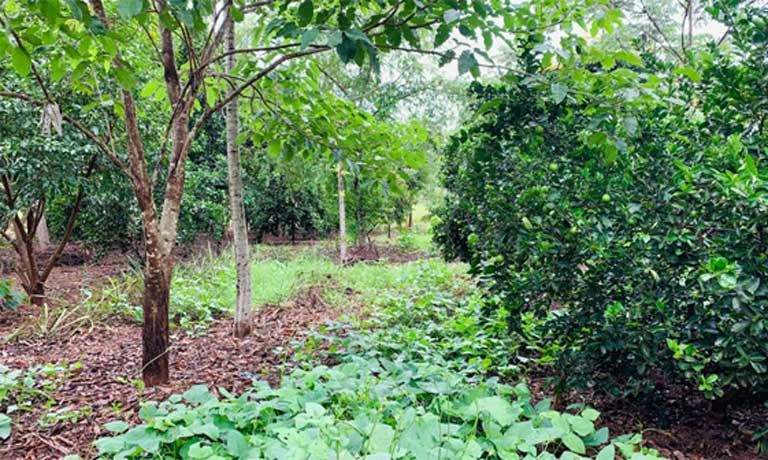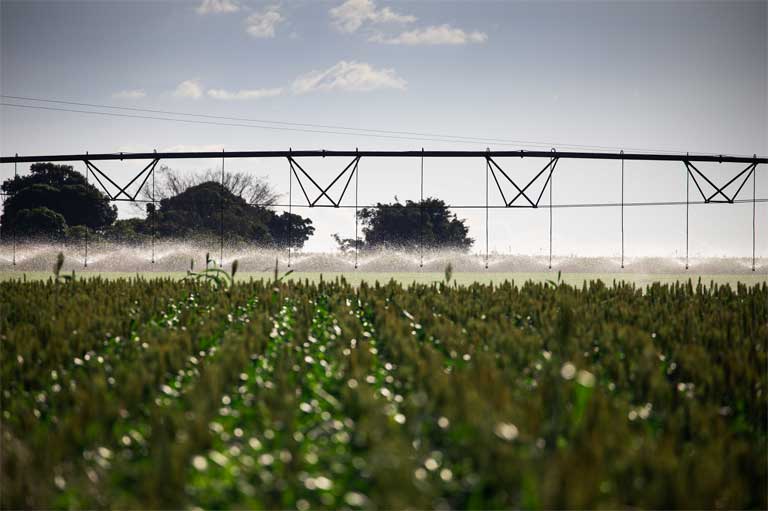
- Researchers asked agroforestry and conventional smallholder farmers in São Paulo state, Brazil for their views on the benefits of agroforestry — a farming technique that combines native vegetation with fruit trees, crops and sometimes livestock — and what they see as the barriers to switching.
- Consistent with benefits identified in past ecological studies, agroforestry farmers ranked bird abundance and soil moisture higher than conventional farmers and reported that trees on their farms cooled the air and reduced storm damage. These farmers were also more likely to be self-sufficient.
- Many smallholders who still rely on conventional crop and cattle monocultures say a lack of knowledge is holding them back from switching over to agroforestry, but technical support and environmental education could encourage them to adopt this restorative approach.
- Brazilian President Jair Bolsonaro’s laser focus on offering support for large-scale commercial agribusiness has left smallholder farmers lacking in financial and technical assistance to make the switch to agroforestry. It also limits their access to markets for their diverse harvests.
Smallholder agroforestry farmers in Brazil’s Atlantic Forest biome have observed environmental, social and cultural benefits arising from their restorative farming practices, researchers recently reported in the British Ecological Society’s journal People and Nature.
However, major policy, financial and logistical hurdles are preventing them from reaching the full commercial potential of their harvests, and also deterring conventional, non-agroforestry farmers from embracing more eco-friendly approaches.
Brazil’s Atlantic Forest is among the most biodiverse biomes on Earth, but it is also among the most imperilled: agriculture and human settlement have cleared more than 85% of its original extent. Home to 70% of the country’s population, it includes urban centers such as São Paulo, Rio de Janeiro and Salvador, along with vast agricultural landscapes characterized by a mosaic of rural settlements and some large, commercial farms that grow commodity crops.

Agroforestry, which combines native vegetation with fruit trees, crops and sometimes livestock, has well-documented ecological and agricultural benefits: higher bird and pollinator diversity, improved soil quality and crop yields, along with cooler air (a hedge against global warming which also offers greater comfort to the people living and working on the farm). Fewer studies have addressed social and cultural perceptions of this restorative ecological approach.
Collaborating with the Instituto de Pesquisas Ecológicas (IPÊ), one of the largest environmental NGOs in Brazil, researchers asked smallholder farmers practicing agroforestry or conventional crop and cattle monoculture farming in rural settlements surrounding Morro do Diabo State Park in São Paulo state, for their views on the benefits of agroforestry and the barriers to switching.
Located in one of the largest remaining fragments of Atlantic Forest, the park is home to jaguar (Panthera onca) and the endangered black lion tamarin (Leontopithecus chrysopygus). IPÊ has worked here for more than 20 years with families from the ‘Movimento Sem Terra’ (MST) — the Rural Landless Workers’ Movement, a socio-political popular movement that includes more than 1.5 million Brazilian smallholder farmers. A key IPÊ goal is the restoration of degraded Atlantic Forest while improving livelihoods.


Interviews with 92 MST farm families in Pontal do Paranapanema confirmed previously reported ecosystem service benefits: Agroforestry farmers ranked bird abundance and soil moisture higher than did conventional farmers, and reported that the trees on their farms cooled the air and reduced storm damage. In the hot, increasingly arid Atlantic Forest climate, forested farms provide welcome shade and can cool the air by as much as 6° Celsius (10.8° Fahrenheit), improving quality of life for farmers and livestock, and boosting shade-loving crop productivity.
The study confirms that the “lived experiences [of farmers] using agroforestry over the last ten to twenty years match the [ecological] data,” confirming agroforestry benefits for biodiversity, soil health and climate resilience, said lead author Yara Shennan-Farpón, a conservation scientist at University College London.
“One of the most interesting results was the smallholders and family farmers’ perception [that] agroforestry systems improve environmental conditions,” agreed Jerônimo Boelsums Barreto Sansevero, a restoration ecologist at the Universidade Federal Rural do Rio de Janeiro, who was not involved in the study.

Significantly, agroforestry farmers were more likely to report that all or most of their dietary needs were provided for by their family farms, offering greater food security.
They also valued their ability to cultivate culturally significant crops, including coffee and medicinal plants. Nearly half of agroforestry farmers report producing their own coffee, compared to just 8% of conventional farmers. Coffee is a major cash crop in Brazil, especially for those able to access cosmopolitan markets, but it is also an important part of daily life. “It’s not the most nutritious, staple part of your diet, but everyone does drink coffee. So if you can grow your own, that means you’re self-sufficient,” observed Shennan-Farpón. “There’s pride in that.”
“This comparison between agroforestry farmers and non-agroforestry farmers in the same area is really useful,” said Torsten Krause, a senior lecturer at Lund University Centre for Sustainability Studies in Sweden, who was not involved in the study. “It’s important to show how people are perceiving this type of farming,” in order to evaluate its ongoing success and potential for expansion.

Agroforestry: A leap of faith over multiple barriers
Once established, agroforestry systems can provide a diverse crop that offers resilience against environmental change or market volatility. “It’s a much stronger, more stable system,” explained Krause. Agroforestry farms can even be cheaper to run, in the long-term, “because you need less input: less fertilizers, less chemicals, less pesticides,” he said. But the initial investment — in new seed types, new tools and equipment — can be formidable for many smallholders.
It also takes time for agroforestry systems to become established and offer a stable income source, so farmers need an economic buffer to feed their families while seedlings take root and trees reach maturity. “The main barrier is that initial pot of money to put into changing the way you farm,” said Shennan-Farpón, and having the confidence to do so.
Many conventional farmers reported that a lack of knowledge was delaying their conversion to agroforestry, but technical support and environmental education might encourage them to adopt new approaches. “They don’t necessarily know how to plant and grow using agroforestry techniques,” said Shennan-Farpón, explaining that many agroforestry farmers learned the techniques from NGOs in the region, such as IPÊ, or from neighbors already using agroforestry.

For those conventional small farmers who have relied for decades on more industrialized agricultural methods, making the switch to agroforestry can be daunting. A lack of government and community support, and a lack of financial support topped the list of barriers limiting farmers’ conversion to agroforestry.
“It’s a big leap of faith for them,” Shennan-Farpón conceded, but seeing agroforestry successes on neighboring farms can help reassure apprehensive farmers.
There are some national initiatives that currently support smallholders; the Programa Nacional de Alimentao Escolar (PNAE) for example, requires 30% of school meals be sourced from family farms. But many of these economic policy lifelines could soon vanish if budget-slashing legislation pushed forward by Brazilian President Jair Bolsonaro’s administration becomes law.
In contrast, conventional farmers who produce meat and milk in São Paulo state continue to benefit from government and local industry support. Livestock farmers, for example, receive regular government-funded vet visits. “The fact that they have that [support] for cattle farming and the dairy industry, and don’t have [similar initiatives] for agroforestry, is a massive [policy] disparity,” said Shennan-Farpón.


These inconsistencies reflect a more systemic issue, Krause explained: Bolsonaro’s laser focus on subsidizing industrial agribusiness which mostly produces export commodities such as meat and soy. Agroforestry “goes against the mainstream agricultural lobby, which wants farmers to mechanize [and] intensify, because this is where the money is,” — in the purchase of chemical fertilizers, pesticides and machinery. In agroforestry, “what you need is labor, and knowledge.”
The government fixation on commercial monoculture agriculture means many agroforestry smallholders don’t have access to markets in which to sell their diverse harvests. “They don’t have a lot of access to mainstream markets and there aren’t a lot of agroecological or farmers markets in the region,” explained Shennan-Farpón. Its relatively easy to find buyers for products like coffee, but fruits offer a much bigger challenge. “It’s hard to break that barrier when there isn’t the same interest or market for agroforestry,” she said.

Shennan-Farpón urged that policymakers develop a national plan for smallholder agriculture which would “support them with capacity building, technical support and advice on how, what and when to plant.”
“Easier credit lines, technical assistance, and investment in research are of prime importance,” to facilitate agroforestry among Brazilian smallholders, Sansevero added. “State and local governments also need to encourage and support the use of agroforestry systems through the Environmental Regularization Program,” or Programa de Regularização Ambiental (PRA), a set of environmental initiatives aimed at rural landowners.
Despite these challenges, Brazil today is a global leader in ecological restoration. Conservationists are increasingly appreciating “the value of considering human rights and wellbeing as well as biodiversity outcomes,” said Shennan-Farpón. IPÊ’s long-term collaboration with MST smallholder farm families is a powerful example of how restoration ecology “can work to serve both purposes.”
Citation:
Shennan‐Farpón, Y., Mills, M., Souza, A., & Homewood, K. (2022). The role of agroforestry in restoring Brazil’s Atlantic Forest: Opportunities and challenges for smallholder farmers. People and Nature.
Banner image: Agroforestry farmers in São Paulo state, Brazil. Image courtesy of Instituto de Pesquisas Ecológicas (IPÊ).
FEEDBACK: Use this form to send a message to the author of this post. If you want to post a public comment, you can do that at the bottom of the page.
Brazil’s agroforestry farmers report many benefits, but challenges remain
Source: Trends News

0 Comments